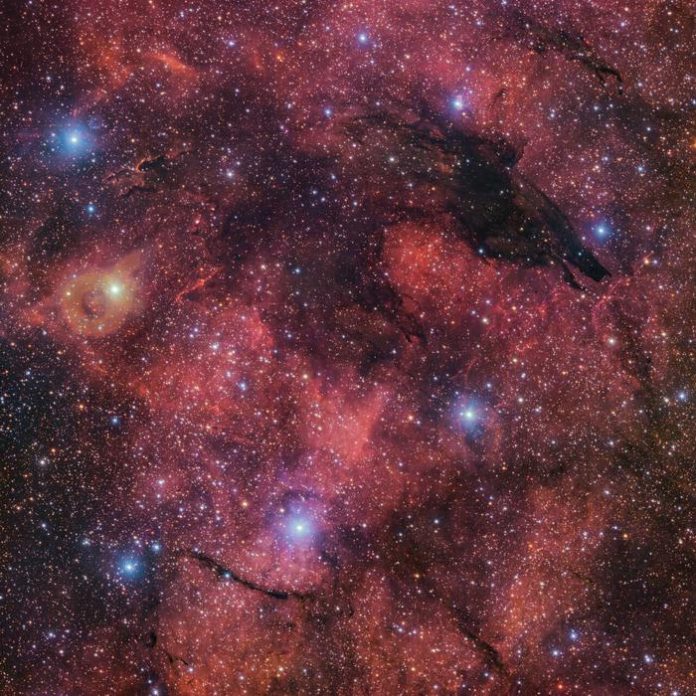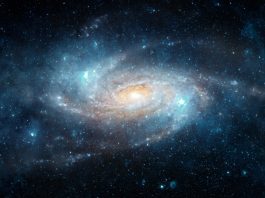The European Southern Observatory (ESO) has revealed an insightful new image of a dark nebula that creates the illusion of a wolf-like silhouette against a colourful cosmic backdrop.
Fittingly nicknamed the Dark Wolf Nebula, it was captured in a 283-million-pixel image by the VLT Survey Telescope (VST) at ESO’s Paranal Observatory in Chile.
The dark nebula is located in the constellation Scorpius, near the centre of the Milky Way in the sky, approximately 5,300 light-years from Earth.
This image takes up an area in the sky equivalent to four full Moons but is actually part of an even larger nebula called Gum 55.
What are dark nebulae and why are they important?
Dark nebulae are cold clouds of cosmic dust so dense that they obscure the light of stars and other objects behind them.
As their name suggests, unlike other nebulae, they do not emit visible light. Dust grains within them absorb visible light and only let through radiation at longer wavelengths, like infrared light.
Astronomers study these clouds of frozen dust because they often contain new stars in the making.
This image shows in spectacular detail how the dark wolf stands out against the glowing star-forming clouds behind it.
The colourful clouds are built up mostly of hydrogen gas and glow in reddish tones, excited by the intense UV radiation from the newborn stars within them.
Mapping the southern sky in visible light
Some dark nebulae, like the Coalsack Nebula, can be seen with the naked eye –– and play a key role in how First Nations interpret the sky –– but not the Dark Wolf.
This image was created using data from the VLT Survey Telescope, which is owned by the National Institute for Astrophysics in Italy (INAF) and is hosted at ESO’s Paranal Observatory in Chile’s Atacama Desert.
The telescope has a specially designed camera to map the southern sky in visible light.
The picture was compiled from images taken at different times, each one with a filter letting in a different colour of light. They were all captured during the VST Photometric Hα Survey of the Southern Galactic Plane and Bulge (VPHAS+), which studied 500 million objects in our Milky Way.
Surveys like this help scientists to better understand the life cycle of stars within our home galaxy, and the obtained data are made publicly available through the ESO science portal.









